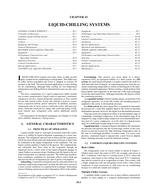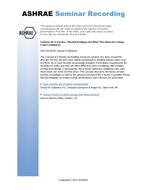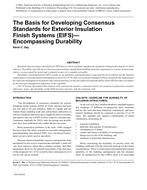A primary force in producing internal flows in a naturally ventilated structure is the external wind pressure field. If the external pressure distribution on a structure is known, established procedures exist by which internal flows can be computed.A difficulty that arises in these computations is the possibility of interaction between the external pressure field and the flow through the building. When the size of the openings in a building becomes large, the internal flow modifies the external pressure field, and any analysis based upon the pressures measured on a sealed structure will be in error. The aim of this study was to evaluate the accuracy of internal flow estimates computed from the external pressure distribution measured on sealed models.
This was accomplished through a series of tests on two models conducted at a Boundary Layer Wind Tunnel Laboratory. The first series of tests involved the measurement of external pressure distributions around a sealed model of a simple domestic structure in turbulent shear flow. These distributions were employed with a theoretical flow model to compute internal flows. In the second series of tests, internal flows were measured for a model of the same dimensions employing a number of different wall porosities as well as with the addition of roof overhangs and wing walls. These experimentally measured flow rates were then compared to the predicted flow rates.
Units: I-P
Citation: Symposium, ASHRAE Transactions, 1987, vol. 93, pt. 2, Nashville, TN
Product Details
- Published:
- 1987
- Number of Pages:
- 16
- File Size:
- 1 file , 1.9 MB
- Product Code(s):
- D-NT-87-25-4


